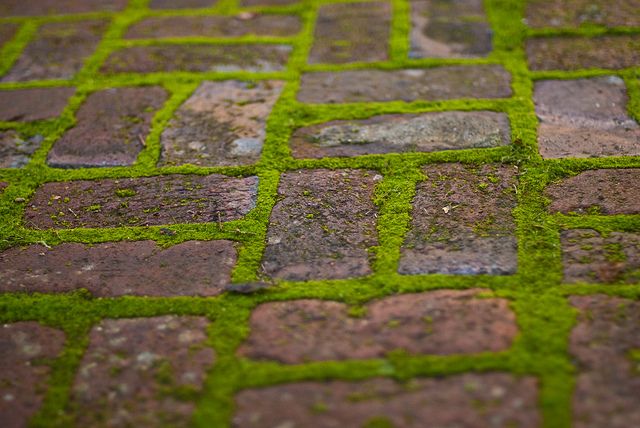
Moss-covered brick paths might look charming in a fairy tale… but in real life, they’re slippery, unsightly, and can even cause long-term damage if left untreated. 😬 So the big question is:
Can pressure washing help remove moss from brick pathways — and is it safe to do?
The answer: Absolutely! 💦 Pressure washing is one of the most effective methods for removing moss, algae, and grime from brick surfaces. But as with anything involving pressurized water and delicate surfaces, technique matters. Let’s take a closer look.
🌱 Why Moss Loves Brick Pathways
Brick is a porous material, which means it absorbs moisture easily. Combine that with shaded areas, poor drainage, or compacted debris — and you’ve created the perfect home for moss and algae.
Left unchecked, moss:
- Makes surfaces slippery and dangerous 🛑
- Retains moisture that can weaken mortar joints
- Discolors the surface over time
- Encourages further plant or root growth between bricks
In short: it’s more than just a cosmetic issue.
💦 Is Pressure Washing Effective for Moss?
Yes — pressure washing is highly effective for clearing moss, especially from horizontal surfaces like walkways and patios. The combination of pressurized water and appropriate technique can strip away:
- Moss and algae
- Mold and mildew
- Organic grime and soil buildup
However, caution is required so you don’t damage the brick, mortar, or surrounding areas.
Browse Amazon Here For Top Rated Power Washers And Accessories
⚠️ Risks of Improper Pressure Washing on Brick
- 🔧 High pressure can erode mortar between bricks
- 🧱 Old or crumbling bricks may chip or crack
- 🪨 Loose bricks may become dislodged
- 💦 Water intrusion into cracks can lead to future issues like frost heaving
That’s why it’s important to choose the right PSI, nozzle, and cleaning method.
✅ Step-by-Step Guide: Pressure Washing Moss from Brick Pathways
1. Clear Loose Debris First 🧹
Sweep away leaves, sticks, and excess moss to prevent clogging your washer or creating additional mess.
2. Wet the Surface 💧
Pre-soak the bricks with water. This softens the moss and prevents surface etching during cleaning.
3. Use the Right Nozzle & PSI 🔫
- Use a 25° or 40° nozzle
- Keep pressure between 1500–2000 PSI
- Maintain 12–18 inches of distance to avoid damage
Start with lower pressure and increase only as needed.
4. Spray at an Angle ↘️
Direct water at a 45° angle to lift moss without forcing water into joints or seams.
5. Work in Sections 🔄
Divide the pathway into manageable sections and clean in smooth, overlapping strokes.
6. Rinse and Inspect ✅
Once moss is removed, do a final rinse to clear away leftover debris.
🧴 Should You Use Detergents or Cleaners?
Yes — but only moss- and mold-specific cleaners. Look for:
- Biodegradable options
- Non-toxic formulas safe for plants and pets
- Moss and algae inhibitors for longer-lasting results
Apply them before washing and allow time to soak in (as directed by the label) before rinsing.
🌿 Preventing Moss from Coming Back
After cleaning, it helps to take a few extra steps:
- Trim trees or plants to allow more sunlight ☀️
- Sweep regularly to keep debris and moisture at bay
- Use a moss killer or sealant designed for brick
- Improve drainage in problem areas to reduce moisture buildup
🏁 Final Thoughts
Pressure washing is one of the best ways to clear moss from brick pathways — as long as you do it safely. Start gently, use the right settings, and combine it with a pre-treatment if needed. You’ll be left with a cleaner, safer, and better-looking surface that’s ready to enjoy year-round. 🙌🌿🧱
Browse Amazon Here For Top Rated Power Washers And Accessories






